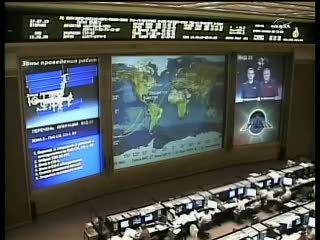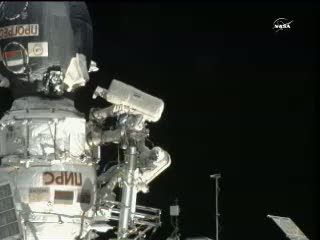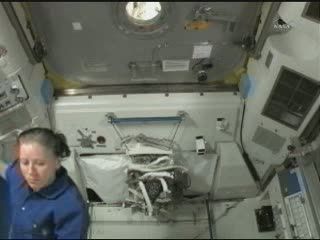E
EarthlingX
Guest
spacefellowship.com : Station Crew Conducts Maintenance and International Science
[youtube]http://www.youtube.com/watch?v=GL0P6ZAgsls[/youtube]
Published by Klaus Schmidt
on Sat Jul 10, 2010 8:01 am
via: NASA
Flight Engineer Doug Wheelock replaced and reconfigured equipment inside the Combustion Integrated Rack (CIR) which is part of the Fluids and Combustion Facility inside the Destiny laboratory. The CIR provides a facility to study droplet, solid and gaseous fuel combustion in microgravity.
Flight Engineers Shannon Walker and Tracy Caldwell Dyson were in the cupola remotely operating the station’s robotic arm, Canadarm2. They performed a walk-off from an Earth-facing grapple fixture on the Destiny laboratory to the Mobile Base System attached to the station’s truss structure.
The Waste and Hygiene Compartment returned to operational capacity Thursday afternoon. NASA astronauts Wheelock and Walker swapped out a faulty pump separator inside the bathroom located in the Tranquility module.
The Russian and American crew members continue conducting a variety of science experiments. Investigations range from the study of unique materials and gases, observing Earth’s urban and natural features to simple experiments which interest children in science and exploration.
The Plasma Crystal experiment, an ongoing Russian investigation, studies how plasma dust structures affect the station’s environment when exposed to ultraviolet space radiation. Cosmonauts Skvortsov and Kornienko set up and monitored the experiment in conjunction with specialists on the ground.
Cosmonaut and Flight Engineer Fyodor Yurchikhin set up and used video and photography equipment in support of the URAGAN experiment. URAGAN is a long-term Russian experiment that documents the changes that occur on Earth after catastrophes such as hurricanes and man-made disasters.
Astronauts Dyson and Walker conducted the Kids in Micro-G experiment and the Low Gravity Artist experiment. These experiments study how simple phenomena observed on Earth differ in microgravity. For example, one part of the experiment observes how blowing across a bottle filled with different volumes of water sounds different in microgravity. Students and teachers on Earth are able to participate with the station flight engineers via a video link with the orbiting laboratory.
The new ISS Progress 38 resupply craft that delivered food, fuel and other cargo continues to be unloaded. Commander Alexander Skvortsov and Flight Engineer Mikhail Kornienko swapped out the new cargo with trash and other gear targeted for disposal.
The six-member Expedition 24 crew also participated in a periodic routine emergency fire drill aboard the International Space Station on Friday. In the unlikely event of an emergency the crew could evacuate the station, shelter inside the two docked Soyuz spacecraft and undock for a safe return to Earth.
[youtube]http://www.youtube.com/watch?v=GL0P6ZAgsls[/youtube]




























